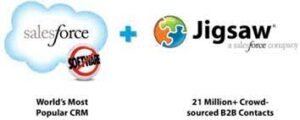I modified a contact’s email address in Salesforce, but the alteration isn’t updated in Pardot.
This behavior aligns with the expected operation of the Salesforce connector, unless you have activated the setting “Automatically change email addresses in Pardot to reflect changes in Salesforce.com” in the Salesforce connector settings.
When you update the email address of a contact or lead in Salesforce, it can synchronize the new address to the corresponding prospect record in Account Engagement. This functionality proves beneficial when your sales team manually updates email addresses or employs a data append service like Data.com, or in cases of lead record merges.
If you have enabled the “Automatically change emails in Pardot to reflect changes in Salesforce” setting, the synchronization of email changes varies when the “Automatically delete or merge prospects if the corresponding records in Salesforce are deleted or merged” option is enabled.
For these functionalities to work seamlessly, refrain from forcing prospect synchronization. Clicking “Send To Pardot” after manually updating the email address in Salesforce generates an additional prospect record. Instead, allow the standard sync process to proceed.
Creating a contact or lead without an email address results in the creation of a prospect if you later add an email address. If a prospect with a matching email address exists in Account Engagement or is created later, it syncs with the corresponding lead or contact in Salesforce.
| SCENARIO | ACTION | RESULT |
| CRM: a@a.com Account Engagement: a@a.com | CRM updated to b@b.com | Account Engagement prospect changes to b@b.com. |
| CRM: a@a.com Account Engagement: a@a.com | Account Engagement updated to b@b.com | New CRM record created for b@b.com. |
| CRM: a@a.com Account Engagement: a@a.com Account Engagement: b@b.com | CRM updated to b@b.com | Account Engagement a@a.com discovers that the CRM entry changed to an email that exists in Account Engagement. Because this record can’t change emails, it’s flagged to not recreate in the CRM. |
| CRM: a@a.com CRM: a@a.com Account Engagement: a@a.com | One of the two CRM records updated to b@b.com | Account Engagement switches primary sync records and syncs with the alternate a@a.com record. The email addresses don’t change as long as an existing lead or contact record with the old email address still exists. |
| CRM: a@a.com Account Engagement: a@a.com | Email deleted from CRM record | Account Engagement marks the prospect [[crm_deleted]] to indicate that the sync has been stopped. |
| SCENARIO | ACTION | RESULT |
| CRM: a@a.com CRM: b@b.com Account Engagement: a@a.com | The two CRM records are merged—a@a.com is now the primary record and adopts b@b.com as the email address. | During the CRM sync, the Account Engagement prospect email address changes from a@a.com to b@b.com. |
| CRM: a@a.com CRM: b@b.com Account Engagement: a@a.com | The two CRM records are merged—b@b.com is now the primary record and adopts a@a.com as the email address. | During the CRM sync, Account Engagement switches to sync with the new a@a.com email address. |
| CRM: a@a.com CRM: b@b.com Account Engagement: a@a.com | The two CRM records are merged—b@b.com is now the primary record and adopts b@b.com as the email address. | During the CRM sync, Account Engagement finds that a@a.com was deleted and flags the Account Engagement record to not recreate in the CRM. |













